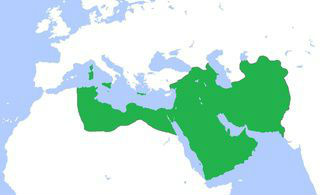You likely don’t give a ton of thought to the sounds and patterns that make up the language you speak everyday. But the human voice is capable making of a tremendous variety of noises, and no language includes all of them.
About 20 percent of the world’s languages, for example, make use of a type of sound called an ejective consonant, in which an intense burst of air is released suddenly. (Listen to all the ejectives here.) English, however—along with most European languages—does not include this noise.
Linguists have long assumed that the incorporation of different sounds into various languages is an entirely random process—that the fact that English includes no ejectives, for instance, is an accident of history, simply a result of the sounds arbitrarily incorporated into the language that would evolve into German, English and most other European languages. But recently, Caleb Everett, a linguist at the University of Miami, made a surprising discovery that suggests the assortment of sounds in human languages is not so random after all.
When Everett analyzed hundreds of different languages from around the world, as part of a study published today in PLOS ONE, he found that those that originally developed at higher elevations are significantly more likely to include ejective consonants. Moreover, he suggests an explanation that, at least intuitively, makes a lot of sense: The lower air pressure present at higher elevations enables speakers to make these ejective sounds with much less effort.
The finding—if it holds up when all languages are analyzed—would be the first instance in which geography is found to influence the sound patterns present in spoken words. It could open up many new avenues of inquiry for researchers seeking to understand the evolution of language throughout human history.

The origin points of each of the languages studied, with black circles representing those with ejective sounds and empty circles those without. The inset plots by latitude and longitude the high-altitude inhabitable regions, where elevations exceed 1500 meters. (1) North American cordillera, (2) Andes, (3) Southern African plateau, (4) East African rift, (5) Caucasus and Javakheti plateau, (6) Tibetan plateau and adjacent regions. (Image via PLOS ONE/Caleb Everett)
Everett started out by pulling a geographically diverse sampling of 567 languages from the pool of an estimated 6,909 that are currently spoken worldwide. For each language, he used one location that most accurately represented its point of origin, according to the World Atlas of Linguistic Structures. English, for example, was plotted as originating in England, even though it’s spread widely in the years since. But for most of the languages, making this determination is much less difficult than for English, since they’re typically pretty restricted in terms of geographic scope (the average number of speakers of each languageanalyzedis just 7,000).
He then compared the traits of the 475 languages that do not contain ejective consonants with the 92 that do. The ejective languages were clustered in eight geographic groups that roughly corresponded with five regions of high elevation—the North American Cordillera (which include the Cascades and the Sierra Nevadas), the Andes and the Andean altiplano, the southern African plateau, the plateau of the east African rift and the Caucasus range.
When Everett broke things down statistically, he found that 87 percent of the languages with ejectives were located in or near high altitude regions (defined as places with elevations 1500 meters or greater), compared to just 43 precent of the languages without the sound. Of all languages located far from regions with high elevation, just 4 percent contained ejectives. And when he sliced the elevation criteria more finely—rather than just high altitude versus. low altitude—he found that the odds of a given language containing ejectives kept increasing as the elevation of its origin point also increased:

Everett’s explanation for this phenomenon is fairly simple: Making ejective sounds requires effort, but slightly less effort when the air is thinner, as is the case at high altitudes. This is because the sound depends upon the speaker compressing a breath of air and releasing it in a sudden burst that accompanies the sound, and compressing air is easier when it’s less dense to begin with. As a result, over the thousands of years and countless random events that shape the evolution of a language, those that developed at high altitudes became gradually more and more likely to incorporate and retain ejectives. Noticeably absent, however, are ejectives in languages that originate close to the Tibetean and Iranian plateaus, a region known colloquially as the roof of the world.
The finding could prompt linguists to look for other geographically-driven trends in the languages spoken around the world. For instance, there might be sounds that are easier to make at lower elevations, or perhaps drier air could make certain sounds trip off the tongue more readily.







